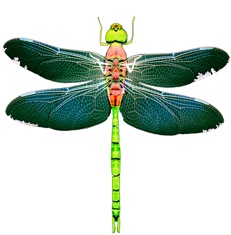The ball arcs into the air, and then downward. A player rushes forward. Whew!! Another save made. The player’s strategy was to move to intercept the ball as it follows a predictable trajectory downward. We are happy the ball was caught, but the situation was not complicated. This is called a “constant bearing strategy” in pursuit of a target moving in a predictable arc. The strategy becomes more serious however when we learn that many animals similarly catch their prey by converging on the straightforward escape route of the hapless victim.
Of course there are plenty of situations where the prey zig and zag. Does this leave potential predators facing starvation? Obviously not. Many predators have been provided with complicated pursuit strategies. Most are animals with backbones, for example echolocating bats. They not only are able to predict trajectories, but they also can react to changes of direction. Their skills are like those of some guided missiles. That is fancy technology!
A recent study has now shown that dragonflies also have amazing tracking abilities like bats and missiles. This is no simple achievement for these insects. It means that they have built-in mathematical models in the brain. Apparently the direction and speed of prey cannot be measured solely from looking at the victim. Instead the insect assesses these things from its own body as it follows the prey. “Their bodies and heads move independently during prey capture, with the head remaining locked onto its target while the body manoeuvres into the optimal orientation for capture.” (Nature Jan. 15/15 p. 279) The insect “aligns its body and bearing to the prey’s direction of motion while remaining directly below the prey and closing the vertical distance to it.” (p. 337) “The key parameters for steering thus appear to arise primarily from prediction and estimation processes.” (p. 337) These “forward models in which an animal predicts how its own actions will affect its sensory feedback — had previously been demonstrated only in vertebrates.” (p. 280)
In less than half a second, the insect victim falls into the hairy front legs of the predator rising to it from below. Such mathematical skills in so small a brain certainly beg the question who conferred these talents on this creature?
February 2015
Subscribe to Dialogue







